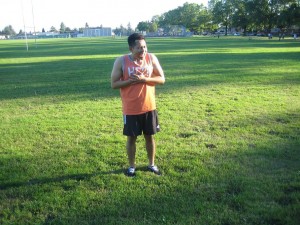The key in order to survive a heart attack is to distinguish that you might be experiencing one and seeking medical help as quickly as possible. An acute heart attack is triggered by a sudden obstruction of a coronary artery which causes some of the heart muscles that supply the artery to die. Since many of the short-term and long-term consequences of a heart attack are determined by the amount of heart muscle that is damaged, the presence of a blocked artery is a big factor.
When an individual is having a heart attack, some try to ride it out with hopes that the symptoms will turn out to be a muscle strain or indigestion. Understandably, this will only cause delay that can lead to devastating consequences. An individual with coronary artery disease (CAD) as well as those who are at risk for CAD must be familiar with the symptoms to watch out for.
Tell-tale signs of a heart attack
The characteristic symptom of a heart attack is an intense, oftentimes squeezing pain or pressure in or around the chest and can radiate to the left arm or jaw. It can be accompanied by profuse sweating or an overwhelming sense of fear or impending doom.
It is sad to note that you cannot depend on having this classic pattern. Oftentimes, the discomfort can be mild and even felt in the abdomen, back, shoulders or arms. Unexplained and abrupt shortness of breath, vomiting, nausea or simply a feeling of heartburn might be the only symptoms.

Take note that these “atypical” symptoms might not be considered by some as a heart issue and will only delay seeking medical care. Remember that women appear to end up with “atypical” symptoms more often than men.
This is the reason why those who have one or several risk factors for CAD are required to pay close attention to any abrupt, unusual or unexplained symptoms involving the upper part of the body.
What to do if you believe one might be having a heart attack?
If the individual experiences any symptoms indicative of a heart attack, especially if he/she has risk factors for CAD, seek medical care as soon as possible. Essentially, it is vital to call for emergency assistance.
Once under the care of the paramedics, the risk for dying from cardiac arrest is drastically reduced. In case emergency assistance is not available, you should bring the individual to the hospital. Always remember to seek medical care right away since having a heart attack means that every minute counts.
What happens at the hospital?
Upon arriving at the hospital, the healthcare personnel should take the symptoms seriously. The individual should be taken to the treatment room where he/she is hooked up to a cardiac monitor, given IV fluid and oxygen, undergo electrocardiogram and a blood test as well as asking questions regarding symptoms and examining the heart.
